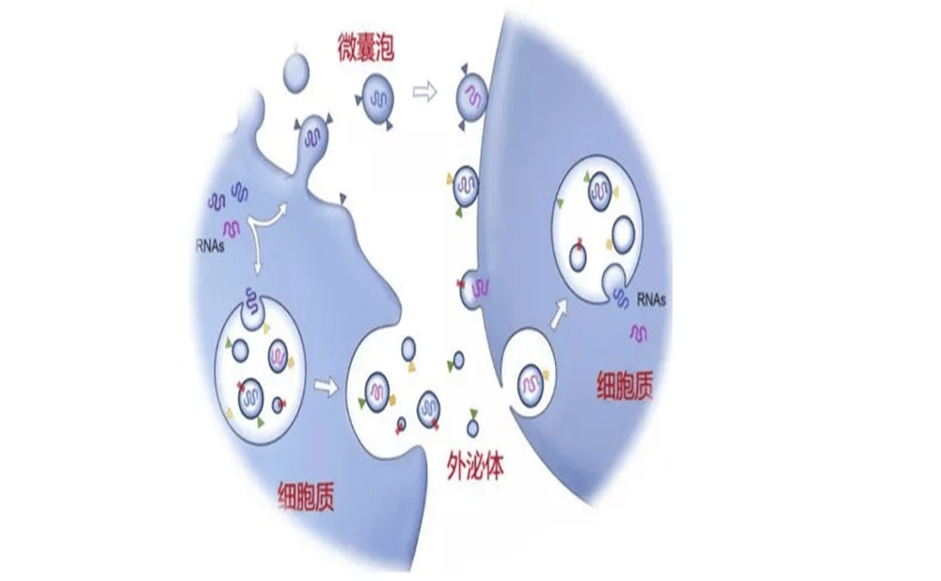Introduction
What are exosomes?
Exosomes are nanoscale extracellular vesicles secreted by stem cells, which have most of the functions of the stem cells from which they are derived. Because they have no nucleus, they are safer than stem cells, and are easy to store and transport, making clinical transformation more convenient.
Exosomes are vesicles with a uniform diameter of 30 to 200 nm, which play a role in intercellular communication. They are actively secreted by cells and carry a variety of cell-active substances, including proteins, RNA, miRNA, growth factors and other bioactive substances. In the action of cytokines, exosomes play a key role in linking cells with the required substances. Exosomes enter the target tissue cells and deliver the substances needed for tissue repair, which can revitalize weakened cells.

Components and Efficacy
Exosomes express CD9, CD63, and CD81 in common, and can also specifically express adhesion molecules similar to their source cells. For example, mesenchymal stem cell exosomes can also detect CD44, CD29, and CD73.
Exosomes have great potential in improving the survival rate of transplanted fat, treating skin photoaging, regulating pigmentation, inhibiting scar hyperplasia, and other medical aesthetic-related diseases. The specific effects are as follows:
1、Whitens and brightens the skin, effectively treats melasma and age spots
Exosomes can reduce the precipitation and dullness of skin pigmentation, making the skin white and translucent
2、Wrinkles are reduced and skin becomes firmer
Exosomes gradually increase the amount of skin elastin, collagen, ADIPOQ protein and AP2 protein, and the rupture of reticular fibers is slowly repaired, repairing skin wrinkles and tightening the skin.
3、Build skin structure
Exosomes activate damaged cell protein FN1 and DNA damage repair protein NAMPT, gradually increasing their number, repairing damaged skin barrier and rebuilding skin structure.
4、Anti-aging
Exosomes can promote the recovery of photoaged skin. Adipose-derived stem cell exosomes can promote the proliferation and migration of UV-damaged fibroblasts, while significantly inhibiting UV-induced overexpression of matrix metalloproteinases 1, 2, 3, and 9, and increasing the expression of types I, II, III, and IV collagen and elastin.
5、Regulate wound healing and improve scar formation
Exosomes can inhibit inflammatory responses, repair damaged tissues, release related mediators, accelerate wound healing and inhibit scar formation.
Safety Profiles
Identification of exosomes
The identification of exosomes mainly includes measuring the size of exosomes by nanoparticle tracking analysis technology, observing the morphology of exosomes by transmission electron microscopy, and detecting specific proteins expressed on the surface of exosome membranes by Western Blot or flow cytometry, such as four transmembrane proteins such as CD9, CD63, CD81 and CD82, and proteins involved in the formation of exosomes such as TSG101 and Alix.
安全
关于我公司自主研发的外泌体,经过严格筛选和检测,来确保我司产品的高纯度和安全性。
.......?